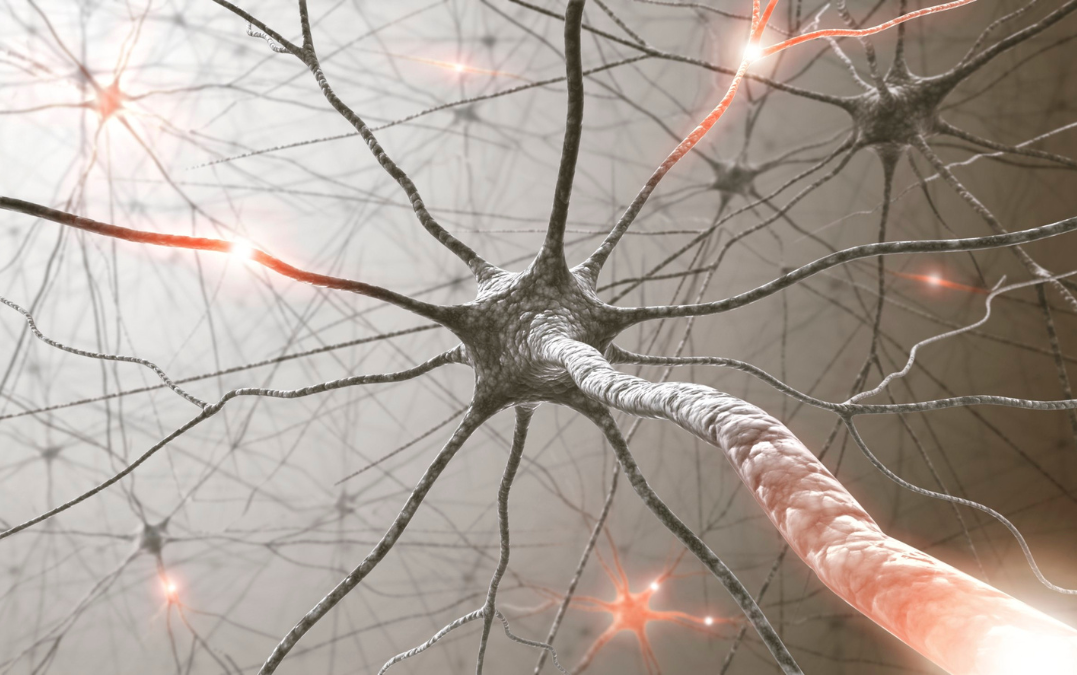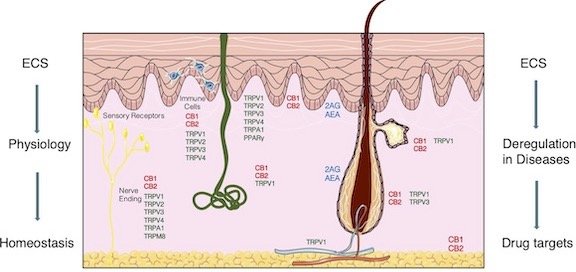Essential Oils Don’t Need to Penetrate Deep To Be Effective
Have you ever noticed how quickly essential oils can have a therapeutic effect when applied topically? They’re able to work very quickly, just not likely the way you think they do.
Essential Oils Don’t Need to Reach the Bloodstream
For years, essential oils have been described in terms of absorption. How they penetrate the skin, and can quickly enter the bloodstream. Not only is that information misguided, but that framework misses the true mechanism behind their most immediate and effective actions.
Essential oils work through communication with surface cells. Their primary channel of activity is through cell receptors—those small, specific, and intelligent entry points that translate chemistry into function.
This is what I focus on when I formulate. I look at how the molecules in an essential oil will interact with receptors at the site of use. I’m not trying to drive oils into deep tissue or the bloodstream. I’m selecting oils that send a message. A calming signal. A regenerative signal. A wake-up call to a tired or inflamed system. That message is chemical, and it’s delivered through receptor recognition.
For a focused training session. Book a free 30-minute coaching call at jimmharrison.com
The skin expresses a surprising number of sensory receptors: chemosensory, cannabinoid, thermoregulatory, and even olfactory.
Receptors on the Skin Surface
The skin expresses a surprising number of sensory receptors: chemosensory, cannabinoid, thermoregulatory, and even olfactory. These aren’t passive entry points. They’re active, responsive, and biologically instructive.
Olfactory receptors (ORs)—once thought to exist only in the nose—are now confirmed throughout the skin. Found in keratinocytes, hair follicles, and sebaceous glands, receptors like OR2AT4, OR51E2, and OR2A4/7 are sensitive to compounds found in essential oils.
When these receptors bind with specific odorant molecules, the response is fast and direct:
Increased cell proliferation and migration
Activation of cAMP and MAP kinase pathways
Stimulation of melanin synthesis
Support for wound healing and hair growth
One example is OR51E2, found in skin and hair follicles. This olfactory receptor responds to β-ionone, a compound present in rose oil, influencing pigmentation and regeneration.
These are the kinds of interactions I design for. When creating a blend to support pigmentation balance or regenerative care, I’m thinking about β-ionone content. Not as a percentage of a chemical compound, but as a signal with a target.
Wound Healing of Sandalwood. Well, Not Quite.
In a study by Busse et al., it appeared that sandalwood oil activated OR2AT4, an olfactory receptor found in the basal layer of the epidermis. This activation stimulates keratinocyte migration and speeds up wound closure.
Except, the sandalwood compound having this result wasn’t natural santalol. It was Sandalore, a synthetic analog that mimics it. So, synthetics are therapeutic? In that context, yes
Authentic plant oils are capable of the same and offer much more. This is due to their complexity and ability to bind to several receptors simultaneously. Patchouli essential oil, for example, also activates OR2AT4 and stimulates wound healing (Lee et al., 2022).IT will also reduce inflammation and help balance nervous conditions.
Cannabinoid Receptors and Essential Oils
The skin also contains CB2 receptors, part of the body’s endocannabinoid system. These receptors are heavily involved in immune regulation and inflammatory control.
β-caryophyllene (BCP), a sesquiterpene found in copaiba, and black pepper, binds directly to CB2 receptors. This interaction has been shown to:
Lower inflammation
Support wound healing
Reduce pain and irritation
Modulate immune cell activity
CB2 activation is especially important in topical therapy, where inflammation, histamine response, and tissue repair are involved. And again, this effect doesn’t rely on deep absorption. It requires contact. Signal. Recognition.
Receptor Science Through the Nose
Inhaled essential oils activate the olfactory bulb, sending signals to the limbic brain, which governs emotion, memory, and autonomic regulation. Essential oils influence the hypothalamic–pituitary–adrenal (HPA) axis, helping regulate cortisol and stress-related inflammation.
This kind of neurological engagement doesn’t rely on systemic processing. It happens through receptor activation and signaling.
The skin doesn’t operate separately from emotional or immune function. It receives and sends signals that ripple across hormonal, neurological, and immune pathways.
The ENIC System
An important connection in all of this is the ENIC network—the interplay between Endocrine, Neuro, Immune, and Cutaneous (skin) systems. The skin doesn’t operate separately from emotional or immune function. It receives and sends signals that ripple across hormonal, neurological, and immune pathways.
Essential oils interact with the ENIC system through multiple receptor pathways:
Olfactory receptors
• Cutaneous: Regulate keratinocyte behavior, stimulate regeneration, influence pigmentation
• Neuro: Signal through sensory neurons and local nerve endings
• Endocrine: Influence local hormonal-like signaling within the skin
• Immune: Affect barrier function and inflammatory response via cellular communication
Cannabinoid receptors
• Immune: Modulate inflammation, cytokine activity, and immune cell behavior
• Cutaneous: Support tissue repair, barrier recovery, and wound healing
• Neuro: Influence neurogenic inflammation and peripheral nerve response
• Endocrine: Indirectly regulate stress-response pathways through immune-neuro interaction
TRP channels
• Neuro: Mediate pain perception, thermoregulation, and sensory signal transduction
• Cutaneous: Respond to environmental stimuli and regulate local inflammation
• Immune: Trigger or reduce neurogenic inflammation via nerve–immune communication
• Endocrine: Contribute to HPA axis activation under sensory stress or irritation
Limbic olfactory pathways
• Neuro: Drive emotional response, memory, and behavioral regulation
• Endocrine: Activate the HPA axis, influencing cortisol and hormonal balance
• Immune: Modulate immune activity via neuroendocrine feedback
• Cutaneous: Influence skin condition indirectly through autonomic and hormonal shifts
When I formulate, I’m not building products that coat the skin or pass through it. I’m designing for a receptor response. That’s what becomes therapeutic activity.
Precision, Not Penetration
Topical application delivers essential oils where they’re most effective. It’s at the surface where key receptors are ready to communicate your desired therapeutic results.
The outcome doesn’t depend on how far an oil travels into the body. Your results are determined by how well your formula matches receptor communication. That’s a matter of chemistry, structure, and molecular recognition, not dosage or depth.
Essential oils aren’t passive absorbables
Your essential oils are active communicators. Plant-based compounds designed to speak to the body’s receptor systems and shift internal states—emotionally, physically, and neurologically.
This is how they work.
And it’s why they’re so powerful.
For a focused training session. Book a free 30-minute coaching call at jimmharrison.com



